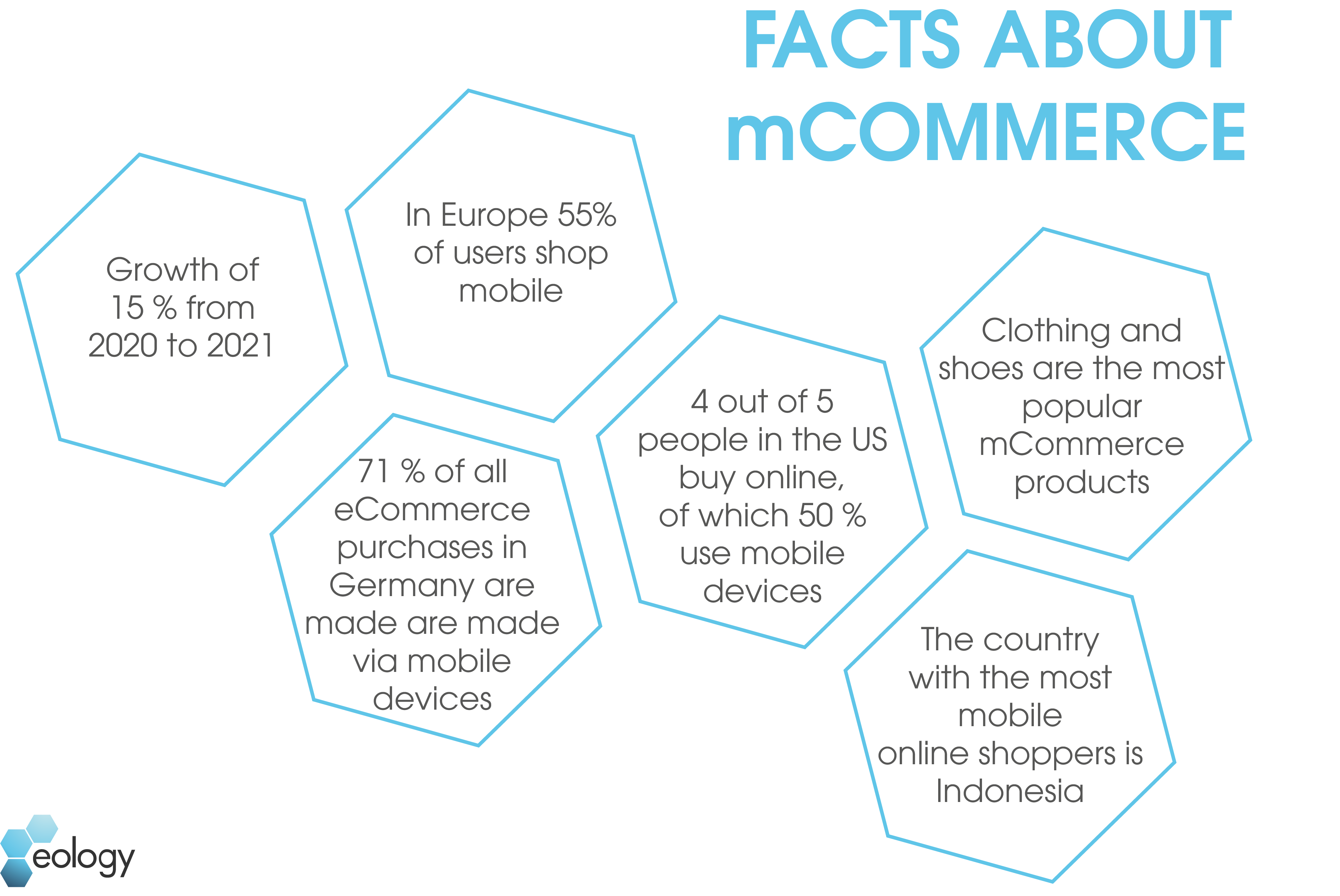
We have collected the paid advertising trends of the coming year for you and present them clearly here! You want to know more? You can do so by clicking on the article. ... Continue reading


| 12.12.2023 |
The year is already coming to an end again. That’s why we’re already looking at the emerging eCommerce trends for 2022.
AI is not an unknown topic – but in the meantime you can actually talk about “intelligence” that a machine can develop. That’s why this topic could be the rage for you and your eCommerce business in the coming year. Learning, intelligent algorithms that analyze the purchasing behavior of your customers and make purchase recommendations based on this can increase your sales and your turnover. Users are also more satisfied due to the personalized shopping experience. Of course, this algorithm not only analyzes the current buying behavior. It takes the following aspects into account, among others:
Even though artificial intelligence is nothing new, the potential of the technology is not yet even begun to be exploited. That’s why, for us, it’s a clear 2022 trend you should have on your radar!
Amazon Echo, Google Nest and Apple HomePod – they all make voice search and voice shopping more and more relevant. Thanks to them, it is no longer weird to ask Alexa, Siri and co. things. Likewise, in the future, it won’t be weird to order groceries, electronics, household goods and the like via voice input. Still, there is a lot of work and challenges behind preparing for this trend. The biggest impact is probably that you can’t rely on visual elements to convince customers of a product. You also have to prepare content in such a way that it is relevant for voice search. So consider this step carefully and analyze whether it’s worth the time investment right now.
You probably know chatbots from many different sites by now. According to a study by HubSpot, 4 out of 10 consumers don’t care whether they talk to a human or a bot, as long as their problem is solved. So the user experience is still remembered positively. Chatbots are therefore popular in support. Ideally, you combine on a blend of human and machine. This means that the customer is greeted by a bot and receives initial advice and help. However, as soon as the bot can no longer help, the system switches to a human live chat.
Personalizable products are becoming increasingly popular. Whether it’s a personalized sneaker, a cap made to your own taste, or a perfume you’ve created yourself – users love something unique. Customizable products are therefore all the rage on a wide variety of websites. And it doesn’t necessarily have to be the big complete set. Customers are often interested in small customizations, such as engraving initials. Another plus point is that you can draw conclusions from the individual products about what your customers like and adapt future products accordingly.
Many people are still advocates of stationary trade. The reason: they can only try on products with a lot of effort and time. This is often due to long delivery routes, returns or the fact that the size did not fit and the entire ordering process has to start all over again. That there one or the other the desire passes, is no wonder.
You could change the whole thing, however, by relying on the eCommerce trend “Augmented Reality” in the future. This “augmented reality” gives your customers a better insight into products, as they are virtually integrated into their lives. This technology is excellently suited, for example, for furniture, decoration, clothing, but also cosmetics. Here, filters à la Snapchat are already causing quite a stir. But you can also integrate them wonderfully into your website! An additional benefit: The more precise idea, which all your customers get, can reduce your return rate.
Headless eCommerce refers to the architecture of the website. The main feature of it is that backend and frontend are technically separated. This way, everything works independently of each other. Nevertheless, it is of course necessary that all parties communicate with each other. This works via performant interfaces, so-called APIs.
Headless eCommerce thus allows you to have more control over your content because the eCommerce platform is decoupled from your front end. So you get “the best of both worlds”: you can personalize your website and design it completely according to your own wishes or corporate identity, but still use the eCommerce platform architecture without any problems. All in all, this makes for a frictionless Customer Journey, satisfied users and a perfect combination of design and technology.
Consumers are becoming increasingly aware of the importance of climate protection and sustainability. Green consumption is therefore probably one of the most exciting trends of the coming year. There is a real trend reversal in the purchasing habits of users.

About 50% of Millenial parents say they like to buy products that focus on sustainability and support environmental goals.
Sustainable product labeling, carbon-neutral shipping, charitable donations, and more can prepare you for this trend. Make sure your business is perceived as sustainable and that shoppers recognize that green consumption is possible with you.
Whether it’s Facebook shops, the integration of Shopify at TikTok, eCommerce extensions at Snapchat or the possibility to set up your own online store on your Instagram profile – social commerce is growing and growing. This, in turn, turns social media into sales channels that you should by no means underestimate.
At the same time, the make of the individual shopping channels are particularly exciting: Facebook, Instagram and Co. namely ensure that users do not have to leave the platform at all. Other measures that the social networks are launching for this purpose are both innovative and interesting. Instagram, for example, published its own checkout, which allows users to pay uncomplicatedly directly on the platform. Such simple ordering processes ensure that purchases in social commerce are growing steadily.
So-called mCommerce, or mobile eCommerce, has already been growing for years. Nevertheless, it remains a stable eCommerce trend that awaits us in the coming year. Some facts speak for themselves:

Further growth in the area of m-commerce naturally also means that you should make your online store, your newsletters, your payment options and much more mobile-friendly. If all relevant areas and the shopping experience are adapted to mobile devices, you are well-prepared for this trend.
It’s no longer news that being an influencer can be a full-time job. But micro-influencers are stealing a bit of their thunder. These are people who have fewer than 10,000 followers on a social platform. Similar to their “big” colleagues, they advertise products that companies make available to them for promotional purposes. However, unlike big-name influencers, their engagement rate is often much higher because they exude more trustworthiness due to their proximity to their followers. So if you’re not already working with micro-influencers, it should be on your to-do list for 2022.
Images are now firmly established in online stores, Google Shopping, etc. You can’t sell your products on the Internet without visual support. But instead of simple product photos, this trend is aimed at interactive content or appealing videos. This “new generation of product photos” can, for example, consist of 360-degree images that show your top sellers from all sides. Also helpful: a visual search that you integrate on your page. This helps users to recognize objects in photos or screenshots. This way, you enable (potential) customers to find exactly what they are looking for.
Last but not least, it is important to offer your potential customers an uncomplicated and fast order processing to avoid shopping cart abandonment. You can achieve this, for example, by using instant payment methods. These often already have all the important data of the buyer stored, which is why he only has to pay to complete the ordering process. Even if you don’t want to use instant payment methods: Keep your order processing as simple as possible.